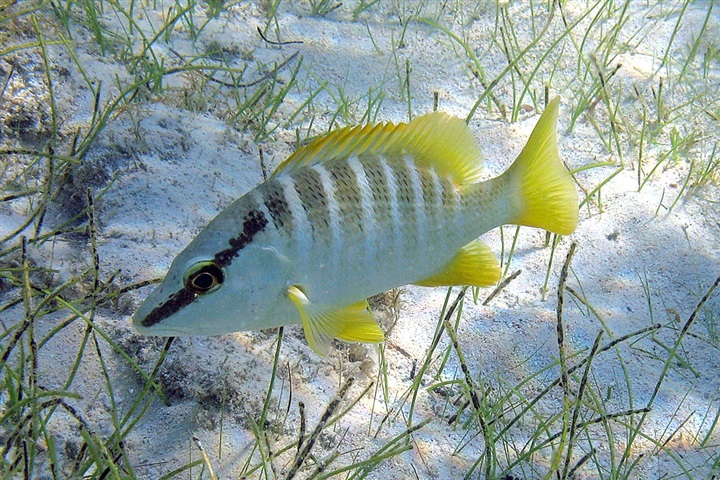Lutjanus apodus

| Latin name | Lutjanus apodus |
|---|---|
| Local name | Schoolmaster snapper |
| Family | Lutjanidae - Lutjanus |
| Origin | The Mexican Golf, West Atlantic |
| Max length | 67 cm (26.4") |
| Minimum volume |
2000 l (528 gal) |
|---|---|
| Hardiness |
Unknown |
| Suitable for aquarium |
Unknown |
| Reef safe |
Unknown |
| Aggressiveness | Unknown |
There is little available knowledge of this species, so there can be important information missing on this page.
Snappers (Lutjanidae) are predatory fish, which normally live off fish and a wide range of invertebrates; typically crustaceans, but also snails, sea urchins, worms etc. They will mostly find their food on the bottom, and some species will blow in the sand to find food.
Unlike the other species, species in the Macolor, Pinjalo and Rhomboplites genera live of the larger kinds of zooplankton.
Snappers are generally fairly hardy, but are only suitable for very large aquaria. One should arrange the tank, with a large overhang or hole where they can hide.
Scott W. Michael. 2004. Angelfishes and Butterflyfishes (Reef Fishes Series Book 3) TFH Publications / Microcosm Ltd. - (English)
Bob Fenner. Snappers, Family Lutjanidae - Wet Web Media - (English)
WWM Crew. FAQs about Snappers, Family Lutjanidae - Wet Web Media - (English)

